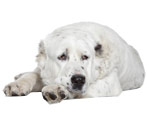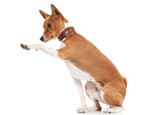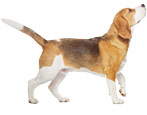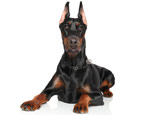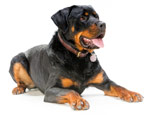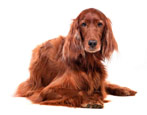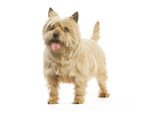Meat for dogs
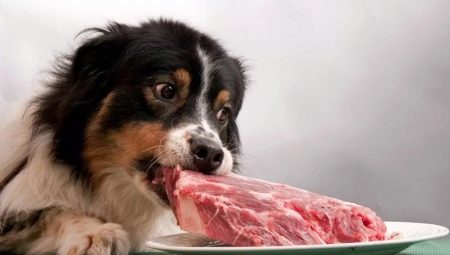
The wild ancestors of domestic dogs, living in their natural habitat, ate the flesh of animals, birds, ocean fish and amphibians. After a man tamed a wild animal and domesticated it, the dog's diet changed, but any dog still needs animal proteins, which enter his body along with natural meat.
The anatomical structure of a dog's teeth and digestive system aids in the digestion and assimilation of muscle fibers, which is why dogs are considered carnivorous carnivorous mammals. According to physiological norms, the daily diet of any dog should contain at least 30-50% of natural meat ingredients.

Benefit and harm
Raw meat is not only a nutritious product, but also contains vitamins and minerals vital for the dog. Only meat fibers are considered useful for nutrition, fat does not belong to this category., since it requires enhanced liver work and is not fully absorbed by the animal's body.
In order for the dog to have a correct metabolism and in order to ensure the well-coordinated work of its internal organs, the animal needs to eat raw meat, which contains the entire complex of essential amino acids that it needs.
If we compare a dog and a person, then it is worth noting the fact that the need for protein of animal origin in a dog is several times higher than in a person, and this factor should not be underestimated when composing a menu for your pet.

But not every meat is intended for feeding a dog, which is explained by the enzymatic composition of gastric juice. Best for dogs are meat and by-products of poultry, rabbit, beef, lamb or horse meat. The dog can eat meat from large marine animals, rodents and even amphibian frogs.
Veterinarians believe that the rumen (upper stomach) of cattle is the most beneficial and nutritious for dogs. This meat product contains a sufficient amount of trace elements such as iron, zinc, phosphorus, sodium, potassium for a dog.

To improve the dog's digestion processes, the rumen contains cellulose and digestive enzymes produced by the microflora of the cow's stomach - they help the dog digest plant foods, for example, vegetables supplemented by his diet. The rumen contains a large amount of vitamins belonging to group B - they contribute to the normal functioning of the nervous and muscular system, improve the external condition and regenerative capacity of the skin and mucous membranes of the dog.
By eating raw meat, the dog increases the level of hemoglobin in his body and stimulates the formation of red blood cells, which is the prevention of anemia and increases the overall endurance of the body.

As a source of natural protein, meat gives the dog vitality and increases its physical activity, strengthens the immune system, and also improves the appearance of the coat. An additional source of iron for your dog can be from raw animal livers. In addition to this trace element, the by-product also contains a large amount of folic acid, which is responsible for the normal ability of the animal to reproduce.

If we consider raw meat from the point of view of possible harm to the health of the dog, then such a danger does exist.
Meat can be a source of infectious diseases if it belonged to animals that died as a result of diseases or the carcasses of healthy animals were stored without observing optimal temperature conditions and underwent a decay process.
There are meats that are not suitable for use in dog food:
- pork - meat, due to its high fat content, is poorly digested and absorbed in the dog's body;
- veal - promotes the development of diarrhea in dogs;
- chicken meat - is filled with antibiotics and growth hormones, and is often contaminated with bacteria called salmonella;
- meat of wild animals and rodents - it is dangerous by the development of helminthic invasion;
- duck or goose - meat is considered fat and can be given in very small quantities;
- River fish - completely contraindicated due to the danger of helminthic invasion and perforation of the digestive tract with sharp small bones.

Some dog breeds have a predisposition to developing meat allergies. Most often, allergic reactions are to chicken meat, and sometimes to rabbit, beef and veal. For such pets, the choice of raw meat is made very carefully, giving the dog a small piece and observing the reaction of his body.
Poultry meat is contraindicated for dogs, in which there are small tubular bones, as well as their heads and necks.... Such meat is a source of danger to your pet's digestive tract, as the sharp edges of the bones can perforate the walls of the stomach or intestines.

What to choose?
When introducing raw meat to a dog's food, take into account the characteristics of each type of such product, to properly formulate the diet, depending on the needs of the animal's body.
- Beef - is considered the best for feeding a dog, since this meat does not have excess fat in its composition. Food will not overload the liver and pancreas of the dog and will not cause the development of atherosclerosis of the vessels in it due to high cholesterol levels. Beef is safe from the point of view of infection with helminths, and when processing meat with low temperatures, all pathogenic microorganisms are eliminated in it.For dogs, it is better to choose the meat of an adult animal, since veal is inferior to it in its properties.
- Offal - these include the liver, kidneys, heart, lung, stomachs and the like. Their nutritional value is considered lower than that of raw meat. It is impossible to completely replace meat with offal in the dog's diet - they are given 1-2 times a week.
- Beef tripe - This product can be given to the dog raw, since after cooking it will lose all its valuable components and lose its nutritional appeal.
- Mutton - useful for the dog's body, as it contains a large amount of B vitamins and iron ions.
- Chicken, turkey - the meat of these birds should be given to the dog in boiled form, but before that, the skin must be completely removed from the product, since it contains substances harmful to the dog in a concentrated form.
- Rabbit meat - is a dietary product that is well absorbed in the dog's body and has a low degree of allergy.
- Ocean fish - a source of omega-3 fatty acids, it can be given to the dog in small quantities to saturate his body with the necessary amino acids.
- horsemeat - is an uncommon but useful product for dogs.

When choosing raw meat for feeding your dog, veterinarians advise using beef and beef tripe, since these two products are the most useful and safe for your pet's body.

Can raw meat be given?
It has been proven that eating raw meat is more valuable for a dog's health, as its nutritional value is higher than that of cooked foods. However, if you want to feed your pet with offal, then some of them are necessary. boil without fail - for example, kidneys.
Before giving to the dog, they are soaked in salted water for several hours and then boiled. Beef lung can be given to the dog raw.
To feed a dog liver, you need to know that beef offal can be given raw, since beef does not carry the danger of helminthiasis, and only boiled pork liver is given, since the raw offal may contain helminth cysts.

Farm chicken raised without the use of antibiotics and hormonal supplements can be given to the dog raw, and if you bought poultry meat from a poultry farm, then boil it before giving the product to your pet.
Chicken heads, necks and skin are not given to the dog for food either raw or boiled.
Beef ribs or cartilage can be fed to the dog raw, or if they belonged to wild animals, then they must be boiled so as not to infect the dog with infectious diseases. Products from beef, lamb, horse meat are considered safe, as they undergo strict veterinary control, while the meat of wild animals carries a threat of diseases.

How much to cook?
To make the meat safe for the dog to eat, it is boiled. For this process, salt and any spices must not be used.... Any extraneous additives and flavor enhancers negatively affect the quality of the finished product, eating which, the dog suffers not only the liver and stomach, but also the sense of smell.
During cooking, a piece of meat decreases in size by about three times, becoming denser. At the same time, a very large part of the protein passes from meat into broth, and all valuable amino acids and vitamins are destroyed in the product.
During cooking, the nutritional value of the meat product is significantly reduced, which means that the portion of the finished boiled meat for the dog needs to be increased. As a rule, in order to provide your pet with full satiety, a piece of boiled meat should be 3 times larger than a piece of boiled meat.

The cooking time should be such that the piece of meat is completely cooked inside and out. The cooking time directly depends on the type of meat and the size of the piece and is usually at least 20-30 minutes. Ready broth is usually not given to the dog, since the concentration of substances in it, boiled from meat during the cooking process, is quite high.
If the broth is diluted with water, then on its basis you can cook cereal porridge for your pet or boil vegetables in it.

Dried meat can only be used if the animal carcasses have passed a veterinary examination. Otherwise, the risk of infection of the dog with helminthic infestation or infectious diseases remains high. It is not recommended to cook the bones that you are going to give to the dog, as they do not present any nutritional value to the animal when cooked.
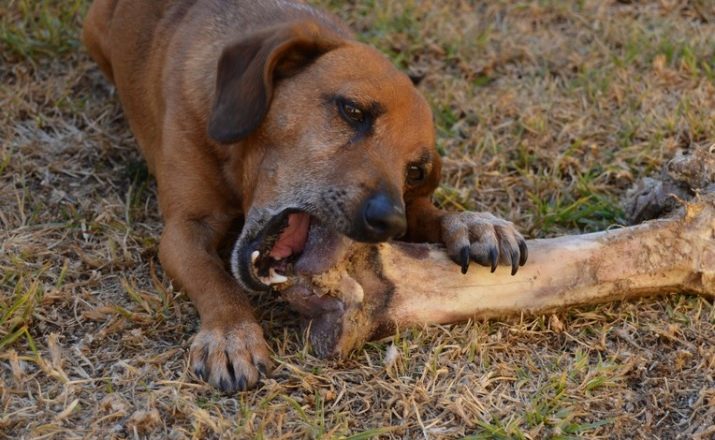
With what to give?
Boiled or raw meat can be given to your pet as an independent dish or as part of other nutritional components, which may well be pasta or cereal. Meat products can be combined with vegetables, giving both of these products both together and separately.
If your pet is fed dry food, then in order to diversify its menu, you can introduce boiled or raw meat into the diet.
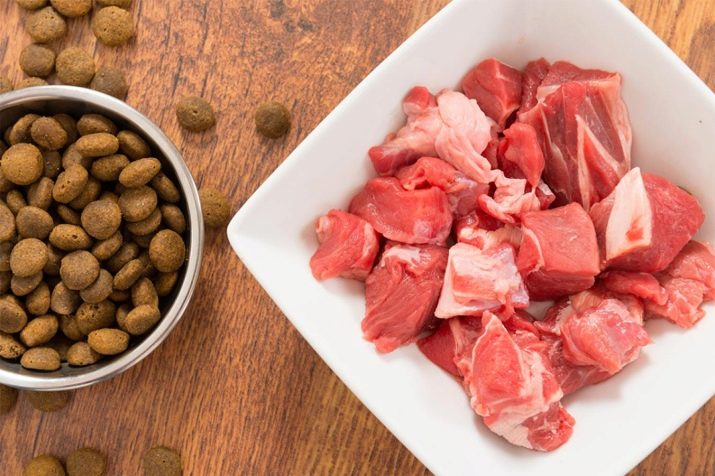
It should be noted that The dog eats up raw meat faster, therefore, when compiling a combined diet, this circumstance should be taken into account so as not to overfeed the dog. Raw meat is best served in large chunks so that he has the opportunity to train his gums and teeth, tearing the meat fibers to pieces on his own.
However, for dogs of miniature breeds, it is best to give meat in the form of meat shavings or trimmings - it will be more convenient for them to eat it.

Norms and rules of feeding
If the dog does not have a stable physical activity, then it is enough for the pet to eat 15-20 g of meat per kilogram of its weight per day. A hunting dog or a temperamental active dog at a young age needs to eat at least 30-35 g of meat per day per kilogram of its weight.
The daily feeding rate can be calculated using the formula where the dog's weight is multiplied by 2, and the result is divided by 100. For example, if your dog weighs 25 kg, then he will need (25x2): 100 = 0.5 kg of meat per day ...

For active pets, the formula will be somewhat different: the weight of the dog is multiplied by the number 3, and the result obtained is divided by the number 100. For example, for the same dog weighing 25 kg with an active lifestyle, we get the following calculation: (25x3): 100 = 0.75 kg of meat per day. This calculation of the daily meat requirement by the weight of the dog is only suitable for adults. For growing puppies, the definition of the amount of meat ration is done differently.
Children can be taught to raw meat gradually, giving it in the form of minced meat 1-2 times a week at the rate of 30 g of the product per 1 kg of the puppy's live weight.

Puppies aged 6 to 12 months during the period of their rapid growth are given meat based on their weight and breed. Miniature dogs, whose weight in adulthood will be no more than 10 kg, are given from 0.75 to 1 kg of meat per day. Medium-sized breeds, which grow up to weigh from 10 to 25 kg, can be given from 1 to 2 kg of meat per day. Large dogs, whose weight at puberty reaches more than 25 kg, are given from 2 to 2.5 kg of meat.

In the next video, you will learn how you can make a treat for dogs.


